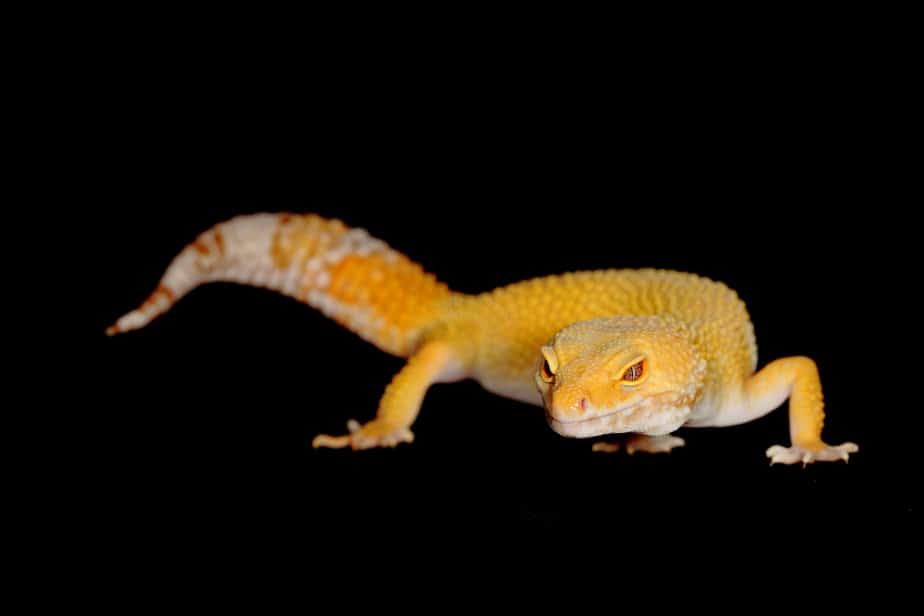
Contrary to popular belief, Leopard geckos are actually not nocturnal but rather crepuscular animals. This means that they’re most active during the twilight hours, during dusk and dawn.
Being crepuscular is, in fact, a survival mechanism for leopard geckos, as it helps them avoid predators that are generally more active during the day or night.
As you continue to nurture and care for your leopard gecko, you’ll find that their innate crepuscular nature is an essential aspect of their overall well-being and a fascinating trait that sets them apart from other reptiles.
Crepuscular Leopard Geckos
When it comes to leopard geckos, many people mistakenly believe they are strictly nocturnal. However, their activity patterns are more nuanced than that. Let’s dive into their behavior, understanding the differences between nocturnal and crepuscular creatures, and how their day and night cycles work with their natural body clock.
Day and Night Cycle
Your leopard gecko will spend most of their day sleeping, tucked away in their hides, or seeking shelter. As twilight approaches, they’ll become more active, taking advantage of the dimly lit hours to search for food, interact, and engage in other natural behaviors.
Since your pet gecko is primarily active during dawn and dusk, adjusting their feeding times to support their natural rhythms is essential.
Natural Body Clock
Leopard geckos possess an innate biological clock that dictates their daily activity patterns. This natural body clock, also known as the circadian rhythm, aligns with the day-night cycle and is crucial in regulating sleep schedules, feeding times, and other essential functions.
Respecting and supporting this body clock is important for maintaining a happy and healthy leopard gecko as it ensures they can thrive and engage in their natural behaviors.
Leopard Gecko Habitat and Environment
Natural Habitat
In their natural habitat, leopard geckos are native to the deserts and grasslands of Asia. The terrain is rocky, and the temperature ranges from extreme highs to lows during the day and night.
Leopard geckos generally prefer dwelling underground during the day to escape the harsh sunlight.
Domestic Habitat
When it comes to creating a comfortable home environment for your leopard gecko, a minimum of a 20-gallon long vivarium is recommended for one adult, made of either wood or glass.
Many owners choose to start their baby and juvenile geckos in the same 20-gallon tank adults use. Various hiding spots and shelters and a suitable substrate to mimic their natural environment should be included.
The Importance of a Day-Night Cycle in Leopard Gecko Lighting
A regular day-night cycle through lighting helps reinforce a leopard gecko’s natural behavior and allows them to become active during twilight hours.
A consistent day-night cycle is essential for maintaining your gecko’s circadian rhythm, which influences their sleep patterns, feeding, and reproductive behaviors. An erratic or absent light cycle can lead to stress, irregular feeding habits, and poor overall health.
To establish a day-night cycle, a timer can control the lighting in the vivarium. This will ensure a consistent cycle of 12-14 hours of daylight and 10-12 hours of darkness, mimicking their natural environment.
During the day, the lighting should simulate natural sunlight, while at night, a low-intensity nocturnal or moonlight bulb can be used to provide a dim light that does not disrupt the gecko’s sleep.
It’s important to note that although leopard geckos are crepuscular, they can still benefit from a moderate exposure to UVA and UVB light. UVA light helps stimulate their appetite, activity levels, and breeding behaviors, while low-level UVB exposure contributes to calcium metabolism and overall health.
Temperature and Lighting
Temperature regulation is essential for your leopard gecko’s health and well-being. The vivarium should have a temperature gradient, with a warm side ranging between 88-90°F (31-32°C) and a cooler side between 75-80°F (24-27°C).
This allows your gecko to self-regulate its body temperature by moving between warm and cool areas. An under-tank heater or ceramic heat emitter can be used to achieve these temperatures.
Feeding Schedule
Sticking to a feeding schedule is important for your gecko’s overall health. Baby and juvenile leopard geckos should be fed daily, while adult geckos can be fed every other day. Here are a few tips:
- Offer food around dawn and dusk
- Observe your gecko’s appetite and adjust the feeding quantity accordingly.
- Remove any uneaten food after a short period to prevent the growth of bacteria and mold.
Sleeping and Brumation
During daytime, leopard geckos usually rest in their burrows. Brumation is a period of reduced activity that some reptiles, including leopard geckos, experience during colder months. It might be brumating if you notice your pet slowing down during winter.
Some Final Thoughts
Leopard geckos are crepuscular reptiles, proving to be most active during dawn and dusk. This unique trait is an essential survival mechanism and a key aspect of their overall well-being.
As leopard gecko owners, understanding and respecting their innate biological clock is crucial for their happiness and health. Providing a suitable habitat, maintaining appropriate temperatures, offering a low-level UVB light source, and adhering to their feeding schedule are all fundamental aspects of nurturing and caring for these fascinating creatures.
By doing so, you’ll be able to support your leopard gecko’s natural rhythms and behaviors, ensuring they thrive in their domestic environment, just as they would in the wild.
